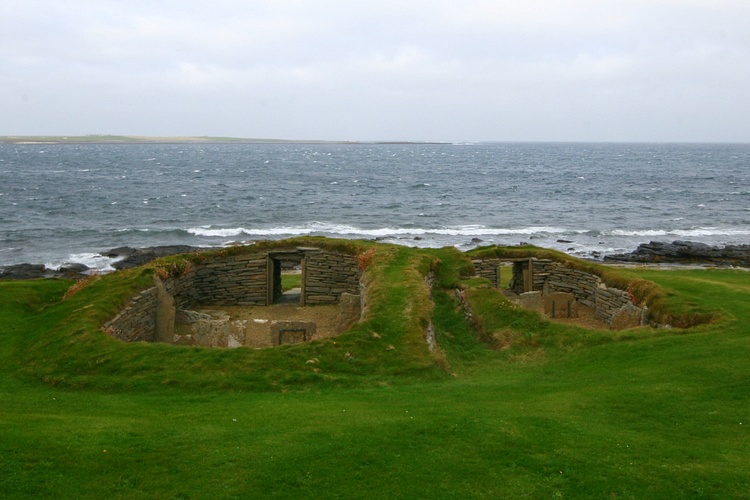Scotland has a rich history dating back to seasonal settlements around c. 10,500 BCE and permanent residences by c. 7000 BCE. Neolithic ceremonial sites such as the Ness of Brodgar were established by c. 3500 BCE, and communities like Skara Brae by at least c. 3100 BCE. The people abandoned these sites but continued to develop others elsewhere.
Skara Brae was a residential community of hunter-gatherers as were older sites, such as the Knap of Howar on Papa Westray, Orkney, dated to c. 3700-3500 BCE. The people of this region raised ceremonial sites including the Ness of Brodgar, Ring of Brodgar, and the Standing Stones of Stenness, thought to have served as liminal places between the earthly plane and others. Further south, Clava Cairns, a Bronze Age site outside of Inverness, dated to c. 2500 BCE, seems to have been used for the same, or similar, purposes. Clava Cairns, also known as the Balnuaran of Clava, was carefully constructed to align with astronomical points and was also used for the burial of important members of the community.
By the 2nd millennium BCE, during the Early Iron Age, Castle Rock in modern-day Edinburgh was inhabited, then was used as a hillfort, and in the 11th century, it became the site of Edinburgh Castle. The site of Stirling Castle, dated to the 12th century, does not have as long a history but is thought to have been inhabited by the Picts in the 7th century and been fortified by the 9th.
These are only a few of the fascinating sites throughout Scotland. The following gallery presents an assortment of the abbeys, standing stones, cairns, and castles of the region, all with long histories. There are many more sites to see besides those featured below and readers are encouraged to go and hear the stories they have to tell.

